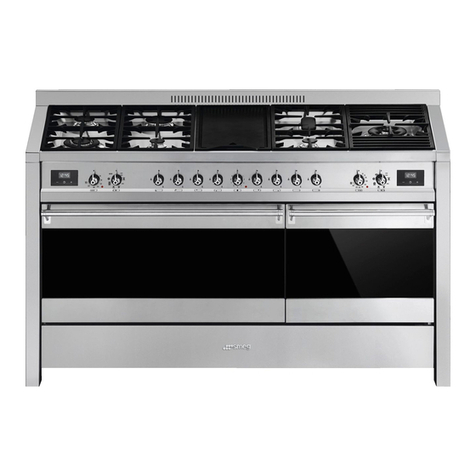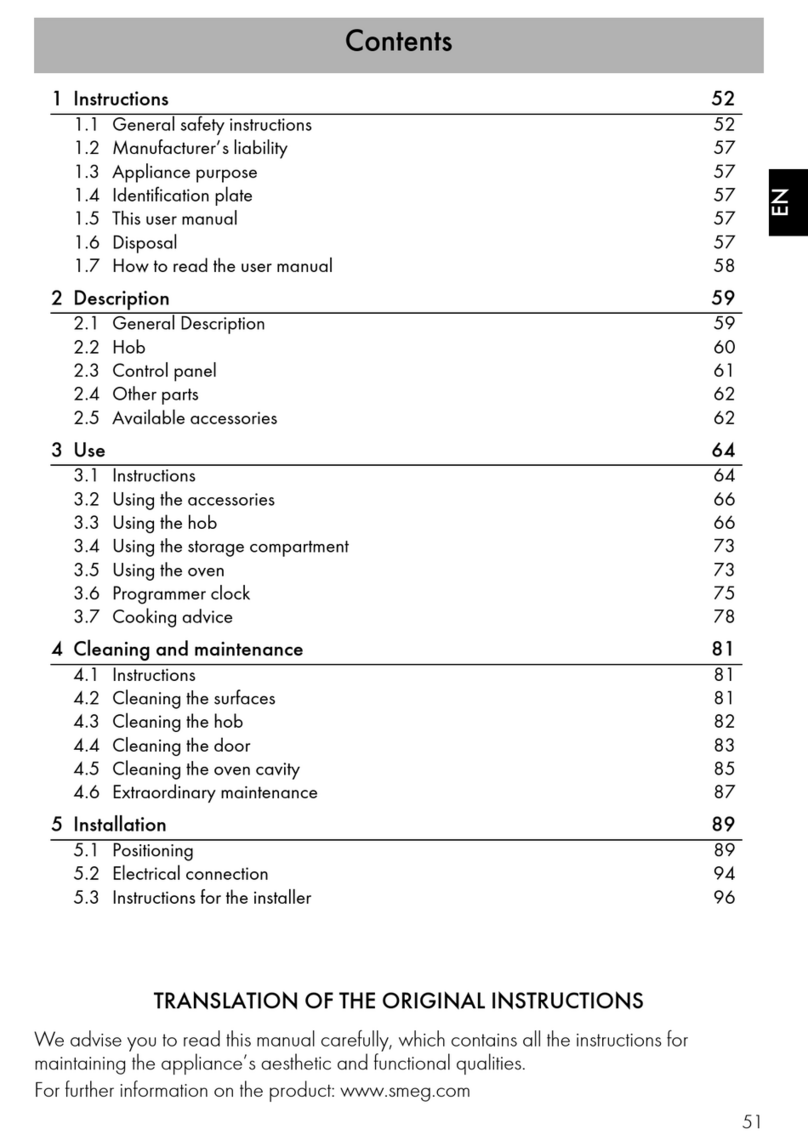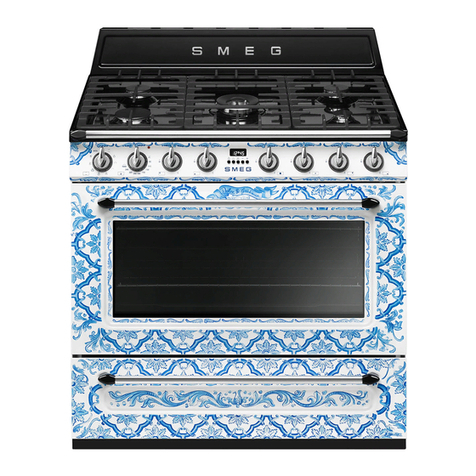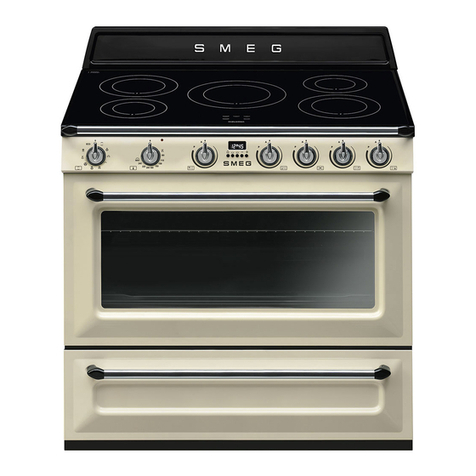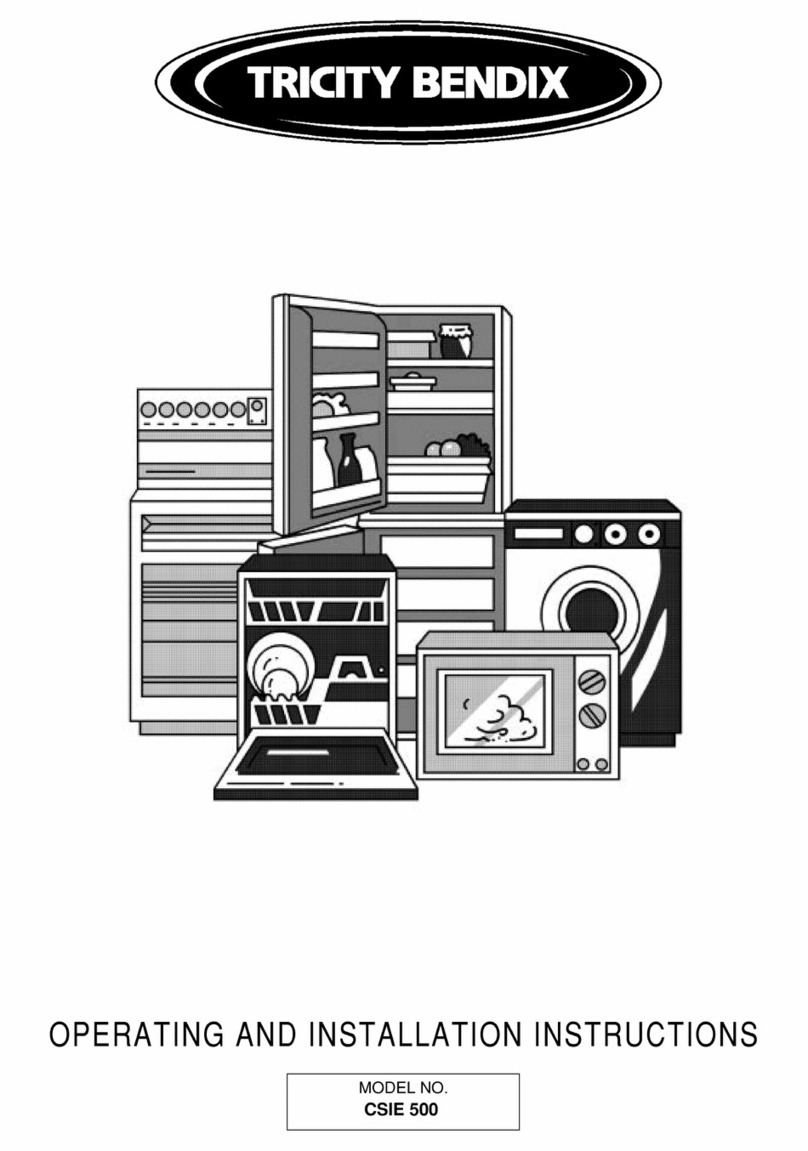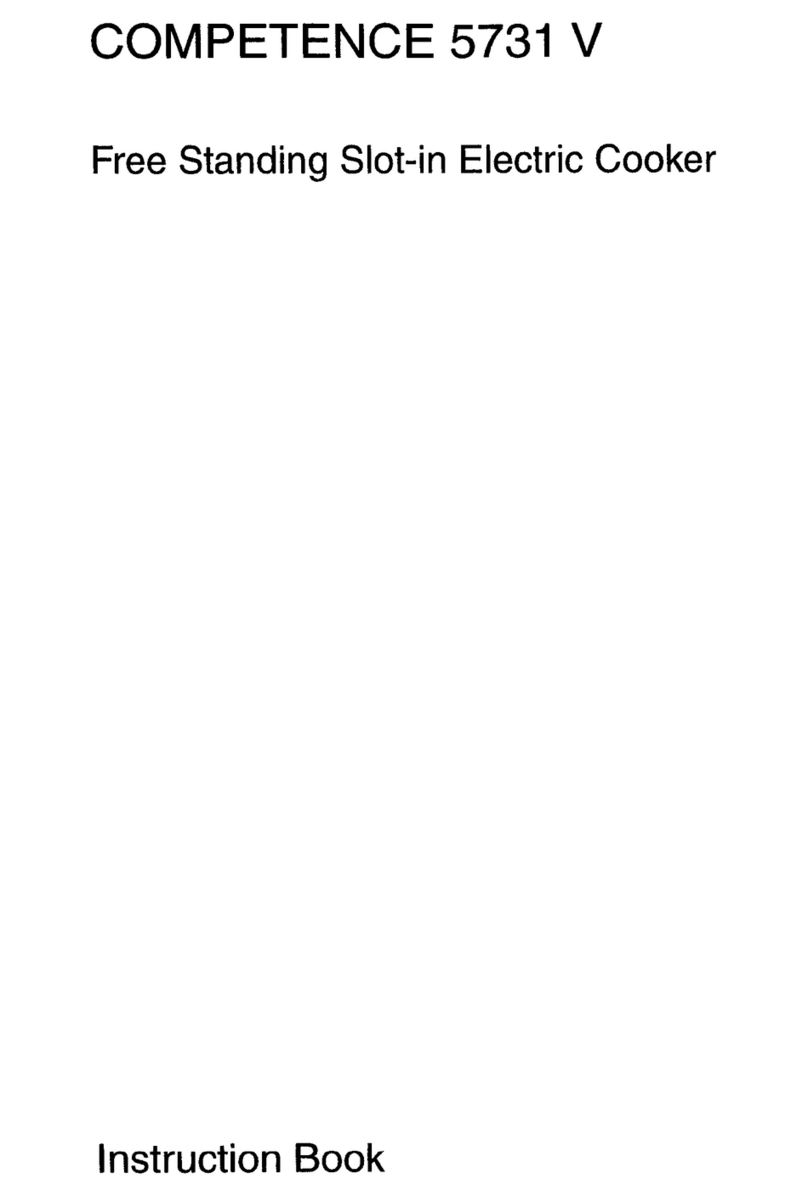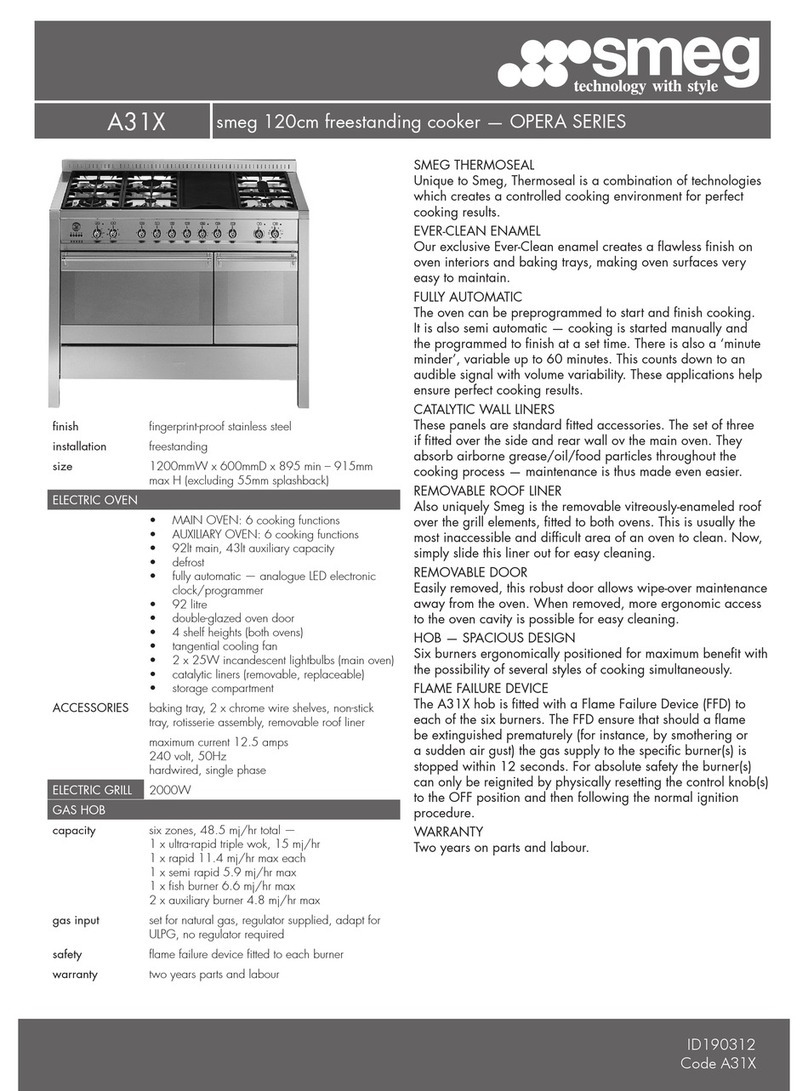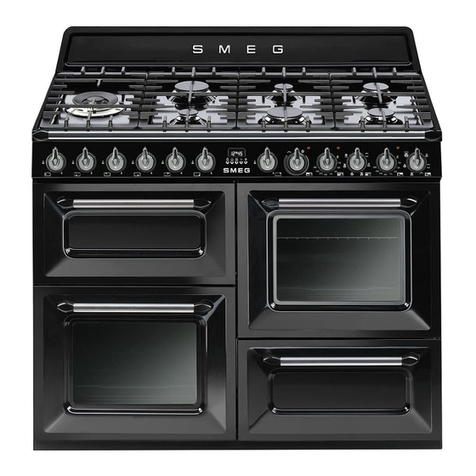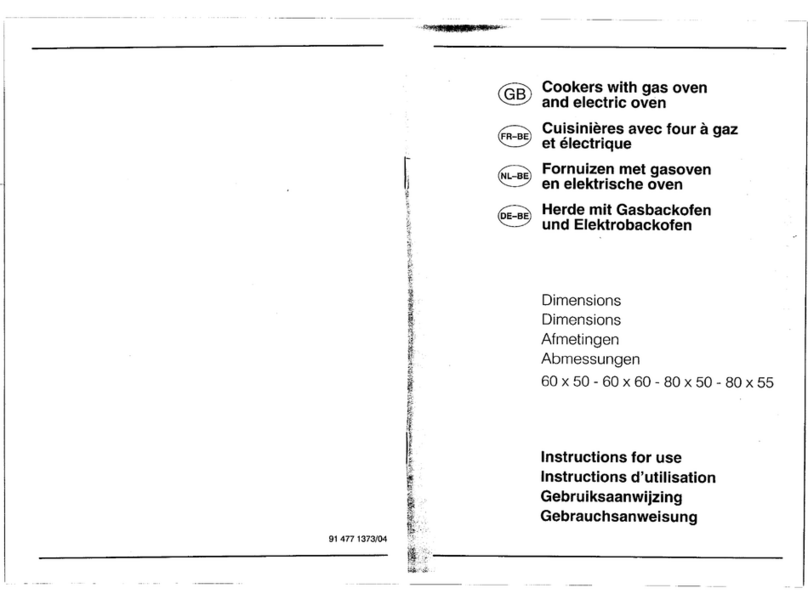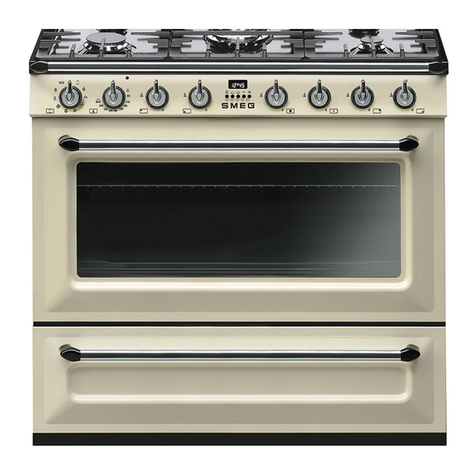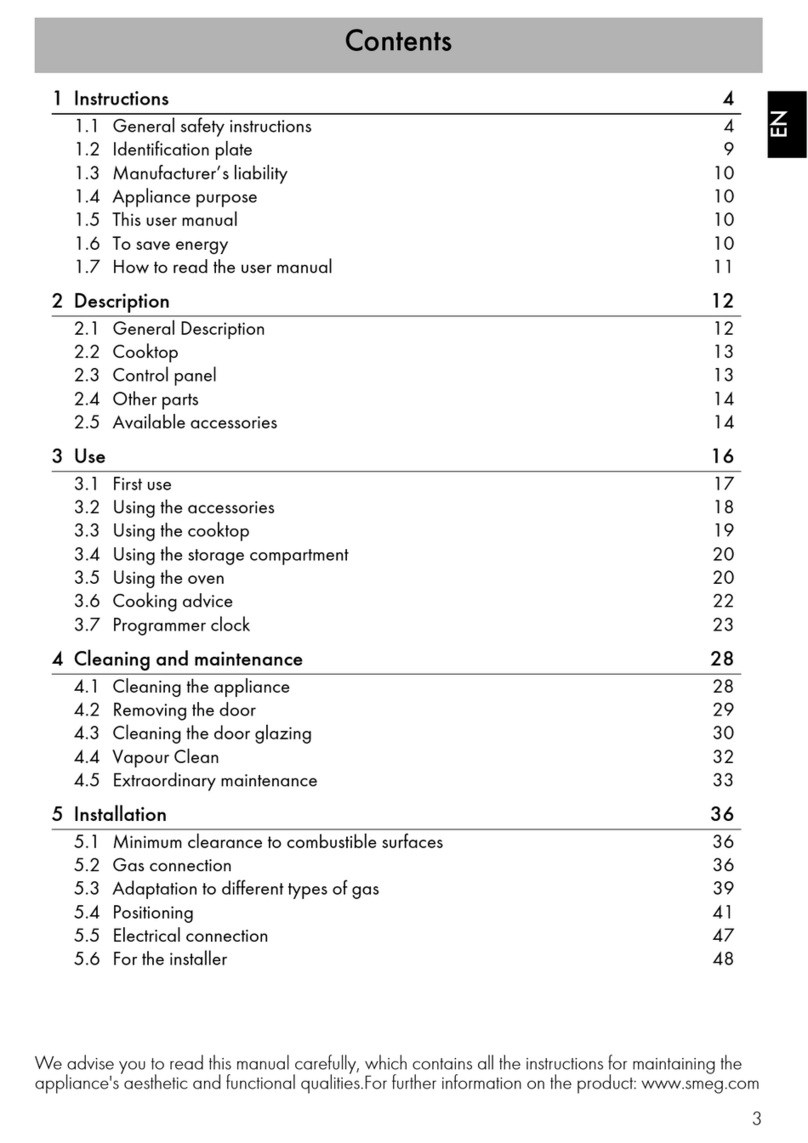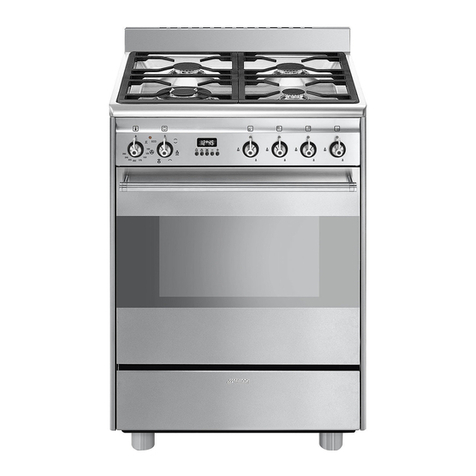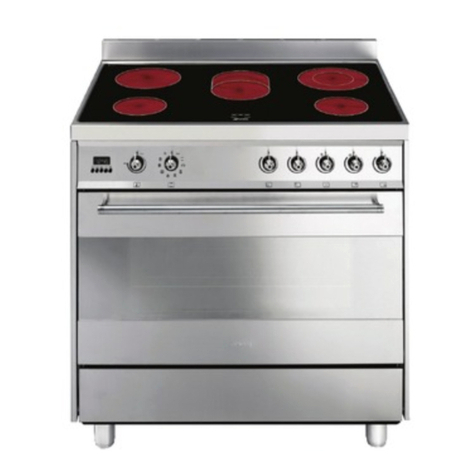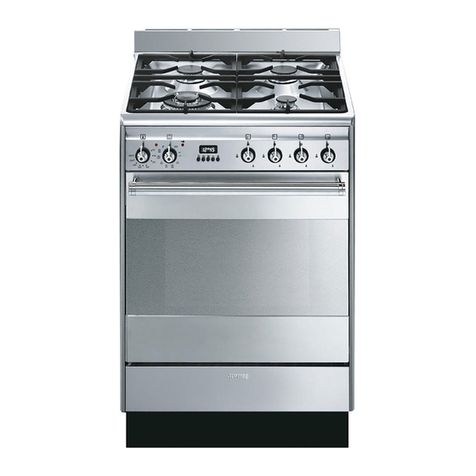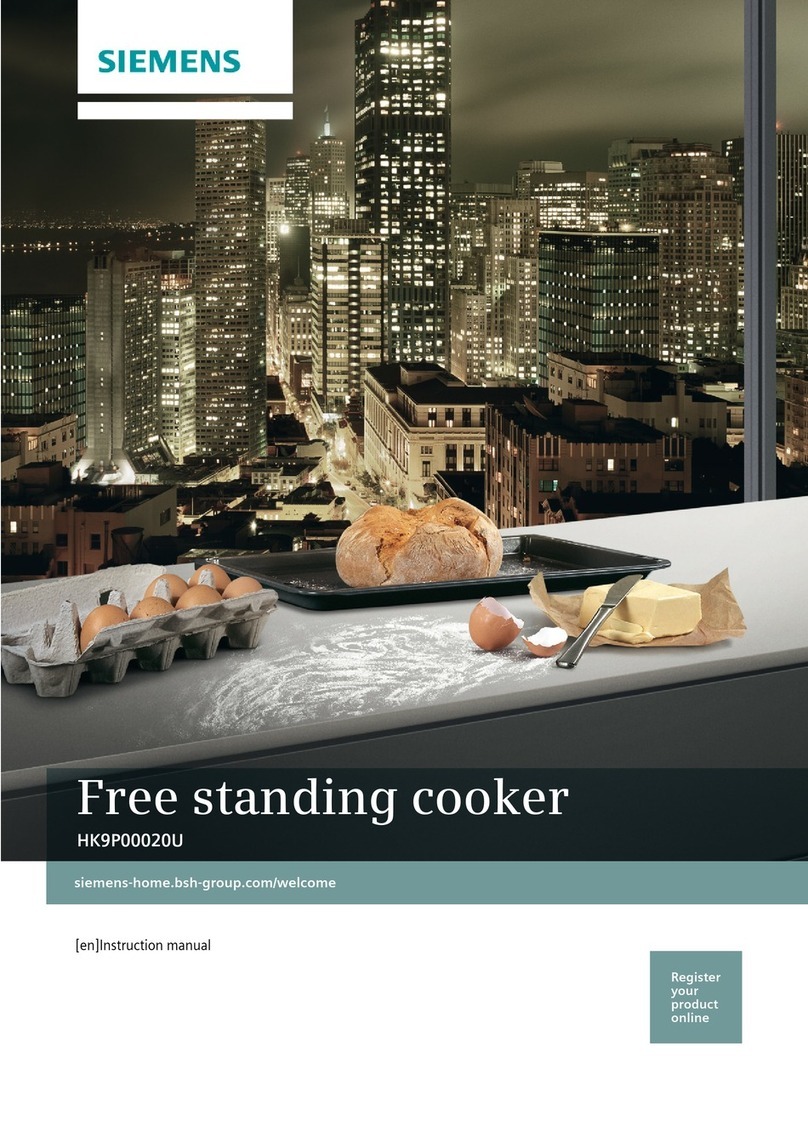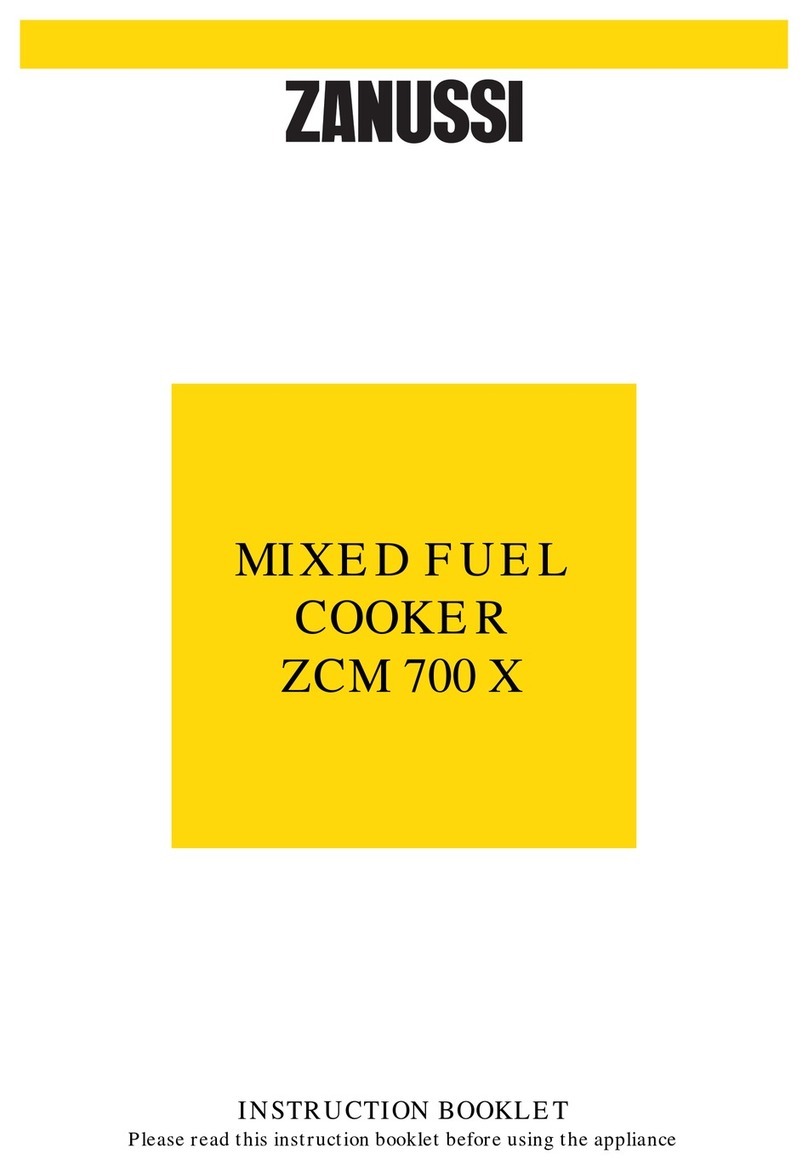
Instructions
45
• Do not obstruct ventilation
openings and heat dispersal slots.
• Never leave the appliance
unattended during cooking
operations where fats or oils
could be released.
• Never leave objects on the
cooking surface.
• Do not use the appliance to heat
rooms for any reason.
• Remove any food residues or
large spills from previous cooking
operations from the inside of the
oven.
For this appliance
• Before replacing the bulb, switch off
the power supply to the appliance.
• Do not rest any weight or sit on
the open door of the appliance.
• Take care that no objects are
stuck in the doors.
• If cracks or fissures form, or if the
glass ceramic cooking surface
breaks, turn off the appliance
immediately. Disconnect the
power supply and call Technical
Support.
• People who have pacemakers or
other similar devices fitted must
make sure that the operation of
these devices is not jeopardised
by the inductive field, whose
frequency range is between 20
and 50 kHz.
• In conformity with the provisions
regarding electromagnetic
compatibility, the electromagnetic
induction cooking hob comes
under group 2 and class B (EN
55011).
1.2 Identification plate
• The identification plate bears the
technical data, serial number and brand
name of the appliance. Do not remove
the identification plate for any reason.
1.3 Manufacturer liability
The manufacturer declines all liability for
damage to persons or property caused by:
• Use of the appliance other than as
envisaged;
• Non-observance of the user manual
provisions;
• Tampering with any part of the
appliance;
• Use of non-original spare parts.
1.4 Appliance purpose
• This appliance is intended for cooking
food in the home environment. Every
other use is considered improper.
• The appliance is not designed to
operate with external timers or with
remote-control systems.
1.5 Disposal
This appliance must be disposed of
separately from other waste
(Directives 2002/95/EC, 2002/
96/EC, 2003/108/EC). The appliance
does not contain substances in quantities
sufficient to be considered hazardous to
health and the environment, in accordance
with current European directives.
To dispose of the appliance:


